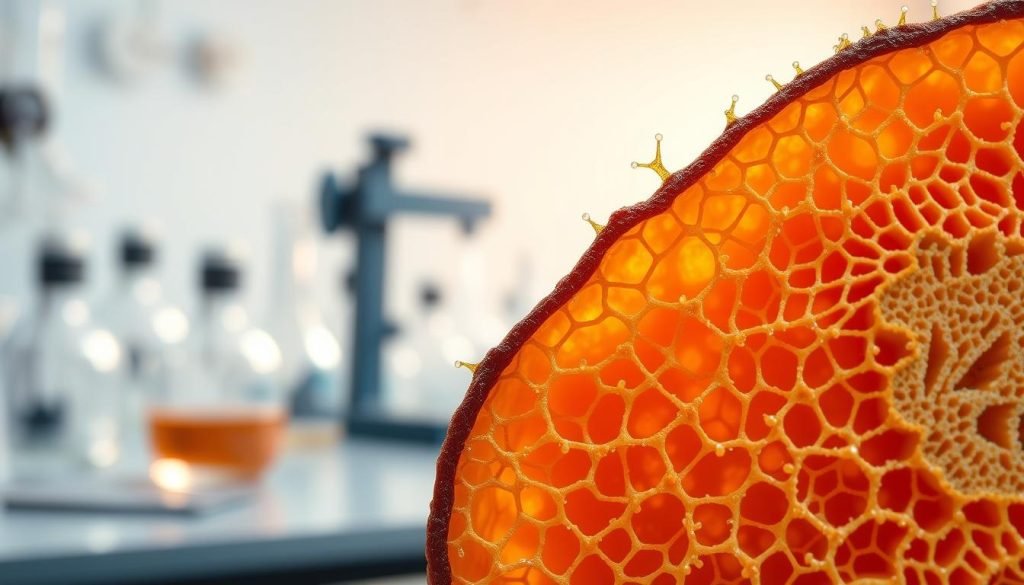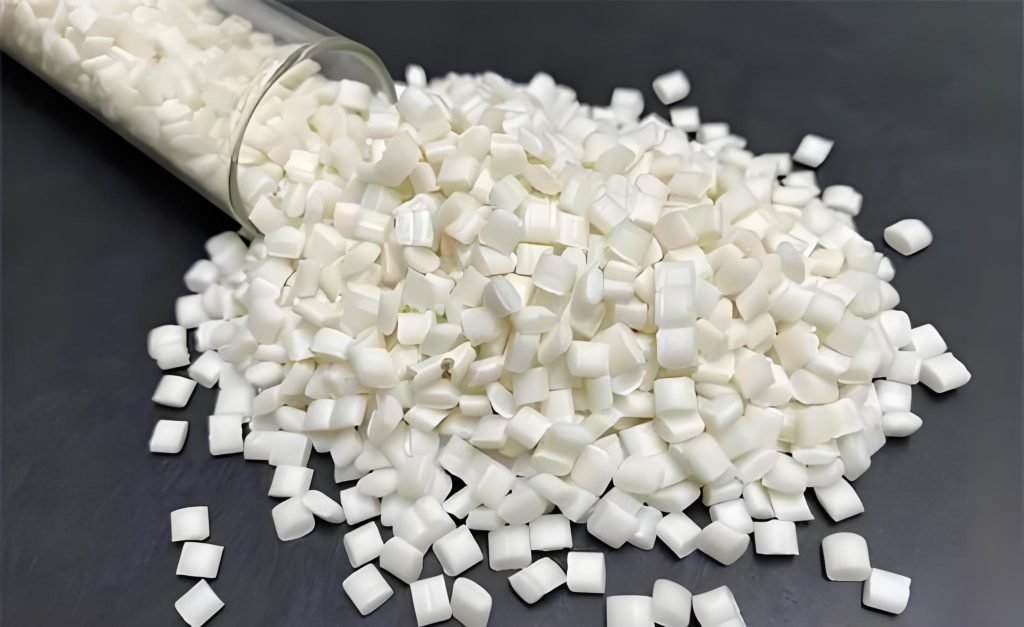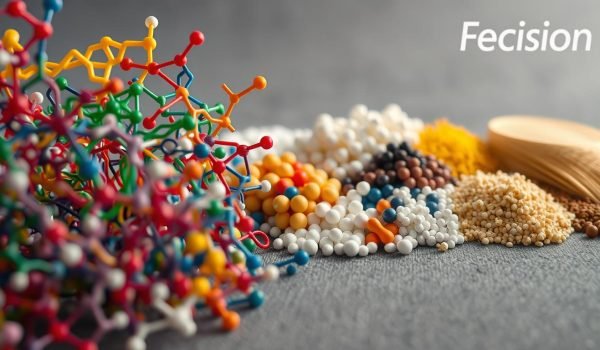When selecting materials for your injection molding projects, understanding the fundamental differences between types of polymers is crucial. You might wonder, can all plastics be melted and reshaped multiple times, or are some limited by their chemical structure?
The distinction lies in their response to heat. Some materials can be heated, cooled, and reshaped repeatedly, while others undergo a permanent chemical change when exposed to heat, setting their shape forever.
Understanding these differences is key to choosing the right plastic for your needs, impacting product performance, durability, and cost-effectiveness.
Understanding Polymer Basics
To comprehend the differences between thermoset and thermoplastic materials, it’s essential to understand the basics of polymers. Polymers are large molecules, or macromolecules, composed of repeating structural units. These units, called monomers, are the building blocks that determine the properties and characteristics of the final polymer material.
The Role of Polymers in Modern Manufacturing
Polymers have revolutionized modern manufacturing by providing versatile, cost-effective alternatives to traditional materials like metal, wood, and glass. Their unique properties, such as durability, flexibility, and resistance to chemicals, make them ideal for a wide range of applications. You can find polymers in everything from consumer goods to industrial components, highlighting their significance in today’s manufacturing landscape.
Heat Response: The Fundamental Distinction
The fundamental distinction between thermoset and thermoplastic materials lies in their response to heat. Thermosets undergo a chemical reaction when heated, resulting in a three-dimensional bonding that makes them strong and heat-resistant but impossible to remould. Thermoplastics, on the other hand, do not form chemical bonds when cured, making them re-mouldable and recyclable. This difference in heat response is determined by the chemical structure and bonding patterns within the polymer chains, impacting manufacturing processes and material selection.
What is a Thermoset Material?

The defining characteristic of thermoset materials is their ability to form permanent cross-links when subjected to heat or other curing conditions. This process transforms them into a robust, three-dimensional network that cannot be melted or reshaped once set.
Chemical Structure and Cross-Linking Process
Thermoset materials undergo a chemical reaction known as cross-linking when they are cured. This process creates a strong and rigid structure that is characteristic of thermosets. The cross-linking process involves the formation of covalent bonds between polymer chains, resulting in a three-dimensional network that provides thermosets with their excellent mechanical properties and resistance to heat and chemicals.
Common Thermoset Materials
Several types of thermoset materials are widely used in various applications. These include:
Epoxy Resins
Epoxy resins are known for their excellent adhesive properties and are often used in coatings and composite materials.
Polyurethanes
Polyurethanes are versatile thermosets used in foams, elastomers, and coatings, offering a range of properties from flexible to rigid.
Phenolic Resins
Phenolic resins are valued for their heat resistance and are commonly used in electrical components and other high-temperature applications.
Silicone
Silicone thermosets are used in a variety of applications, including electrical insulation and high-temperature resistant products.
Melamine
Melamine is used in the production of kitchenware and laminates, offering durability and resistance to heat.
Each of these thermoset materials has unique properties that make them suitable for specific applications and temperature requirements.
What is a Thermoplastic Material?
Thermoplastics are versatile materials known for their ability to be heated, molded, and cooled repeatedly without altering their chemical structure. This characteristic makes them highly versatile and widely used in various applications.

Molecular Structure and Heat Response
The molecular structure of thermoplastics consists of long polymer chains that are not cross-linked. This allows them to become pliable or moldable when heated and solidify upon cooling. The structure of these materials enables them to be reshaped multiple times.
When thermoplastics are heated, the molecules gain energy and start moving more freely, allowing the material to soften. Upon cooling, the molecules slow down and come together, making the material rigid again. This process is reversible, making thermoplastics ideal for recycling and reprocessing.
Common Thermoplastic Materials
Several types of thermoplastic materials are widely used, each with unique properties and applications. These include:
ABS (Acrylonitrile Butadiene Styrene)
ABS is known for its impact resistance and is commonly used in making LEGO bricks and automotive parts.
Polypropylene (PP)
Polypropylene is valued for its chemical resistance and is often used in packaging, automotive components, and textiles.
Polyvinyl Chloride (PVC)
PVC is widely used in construction for pipes and fittings, as well as in medical devices due to its durability and resistance to chemicals.
Polycarbonate (PC)
Polycarbonate is prized for its optical clarity and impact strength, making it suitable for eyewear lenses, automotive windshields, and electronic components.
Nylon
Nylon is known for its durability and is used in a variety of applications, including textiles, automotive parts, and engineering components that require high strength and resistance to temperature variations.
These thermoplastic materials offer a range of benefits, including the ability to be molded into complex shapes and the potential for recycling, making them a popular choice in many industries.
Thermoset vs Thermoplastic: Key Differences
The choice between thermosets and thermoplastics hinges on understanding their fundamental differences in terms of chemical composition, heat resistance, and recyclability. These distinctions are crucial for material selection in various applications.
Chemical Composition and Curing Process
Thermosets and thermoplastics differ significantly in their chemical structure and curing processes. Thermosets form irreversible cross-linked networks during curing, whereas thermoplastics maintain their linear molecular structure. This difference in chemical composition affects their properties and applications.
For instance, the curing process for thermosets involves a chemical reaction that creates a rigid, three-dimensional network. In contrast, thermoplastics can be melted and reformed multiple times without undergoing any significant chemical change.
Heat Resistance and Thermal Properties
Thermosets generally exhibit superior heat resistance compared to thermoplastics. They maintain their structural integrity at high temperatures, whereas thermoplastics tend to soften or melt. This characteristic makes thermosets ideal for applications involving exposure to elevated temperatures.
The thermal properties of these materials, including thermal expansion, conductivity, and stability across varying temperatures, also differ. Thermosets typically have more stable thermal properties, making them suitable for demanding environments.
Recyclability and Environmental Impact
The environmental impact of thermosets and thermoplastics varies significantly due to their different chemical structures and curing processes. Thermoplastics can be melted and recycled, reducing their environmental footprint. In contrast, thermosets are generally not recyclable due to their cross-linked networks, making them less environmentally friendly.
Understanding these differences is crucial for making informed decisions about material selection and for minimizing environmental impact.
Advantages and Limitations of Thermoset Materials
When considering materials for your project, understanding the benefits and drawbacks of thermosets is crucial. Thermoset materials are known for their exceptional performance in various conditions.
Pros of Using Thermoset Plastics
Thermoset plastics offer several advantages, including:
Heat and Chemical Resistance
Thermosets exhibit high-temperature resistance and good chemical resistance, making them suitable for harsh environments.
Dimensional Stability
They maintain their shape and resist warping or deformation under load or environmental changes.
Strength and Rigidity
Thermosets provide high strength, toughness, and rigidity, making them ideal for applications requiring structural integrity.
Cons of Using Thermoset Plastics
Despite their advantages, thermoset plastics have some limitations:
Non-Recyclability
Thermosets are non-recyclable due to their irreversible cross-linking process.
Limited Reshaping Options
Once cured, thermoset parts cannot be reshaped or reformed, limiting design flexibility.
Brittleness Concerns
Thermosets may be prone to cracking under impact or stress conditions, raising concerns about their durability.
Advantages and Limitations of Thermoplastic Materials
As you evaluate materials for your application, it’s essential to weigh the pros and cons of thermoplastics. Thermoplastic materials offer a unique combination of benefits and drawbacks that can significantly impact your project’s success.
Pros of Using Thermoplastic Materials
Thermoplastics have several advantages that make them an attractive choice for various applications. Some of the key benefits include:
Recyclability and Sustainability
Thermoplastics are eco-friendly and recyclable, which supports sustainable manufacturing practices and circular economy initiatives. You can easily remelt and remold thermoplastics into new forms, reducing material waste and improving material supply efficiency.
Impact Resistance
Thermoplastics exhibit excellent impact resistance and toughness, making them ideal for parts that may experience shock or vibration. This property ensures that your parts remain durable and functional under various conditions.
The wide range of aesthetic finishing options available with thermoplastics allows you to achieve the desired appearance for your parts. You can choose from various colors, textures, and surface treatments to meet your specific needs.
Cons of Using Thermoplastic Materials
While thermoplastics offer several benefits, they also have some limitations that you should consider. Some of the key drawbacks include:
Heat Sensitivity
Thermoplastics can be sensitive to heat, which may cause them to deform or lose structural integrity at elevated temperatures. You should carefully evaluate the temperature requirements for your application to ensure that thermoplastics are suitable.
UV Degradation
Certain thermoplastics may become brittle or discolored with prolonged exposure to sunlight, which can impact their performance and appearance. You should consider using UV-resistant thermoplastics or applying protective coatings to mitigate this issue.
Cost Considerations
Some high-performance thermoplastic materials may be more expensive than comparable thermoset options. You should weigh the costs and benefits of thermoplastics to determine whether they are the best choice for your project.
Applications Across Industries
The distinct properties of thermoset and thermoplastic materials make them ideal for numerous applications in different industries. As manufacturing continues to evolve, understanding the specific uses of these materials is crucial for selecting the right components for your projects.
Thermoset Applications
Thermoset materials are widely used in various high-performance applications due to their excellent heat resistance, dimensional stability, and electrical insulating properties.
Electrical and Electronics
In the electrical and electronics industry, thermosets are used for circuit boards, insulators, and encapsulation materials, benefiting from their heat resistance and dimensional stability.
Aerospace Components
Aerospace components, such as structural parts, interior panels, and engine components, utilize thermosets for their high strength-to-weight ratio and heat resistance.
Automotive Parts
In the automotive sector, thermosets are used for under-hood components, electrical systems, and structural parts that must withstand harsh operating conditions.
Thermoplastic Applications
Thermoplastic materials are versatile and find applications across various industries, including automotive, packaging, construction, and consumer goods.
Consumer Products
Thermoplastics are used in consumer products like appliances, toys, and household items, benefiting from their versatility and aesthetic options.
Medical Devices
Medical device applications, including surgical instruments, implants, and equipment housings, utilize thermoplastics for their biocompatibility and sterilization capabilities.
Packaging Solutions
Packaging solutions leverage thermoplastics’ flexibility, clarity, and recyclability for food containers, bottles, and protective packaging.
By understanding the applications of thermoset and thermoplastic materials, you can make informed decisions for your manufacturing needs, ensuring that you select the most appropriate material for your specific application.
Choosing Between Thermoset and Thermoplastic for Your Project
The choice between thermoset and thermoplastic for your project hinges on understanding their distinct properties and applications. When selecting a material for injection molding, consider factors such as operating temperature, chemical exposure, and mechanical stress.
Product design requirements like dimensional stability and aesthetic finish also play a crucial role. Additionally, production factors including volume and cost constraints can influence your material selection. Consulting with material specialists during the design phase ensures the chosen material meets all performance requirements.
Conclusion
The selection between thermoset and thermoplastic materials should be guided by the specific needs of your project, rather than general preferences. Understanding the distinct properties and applications of these materials is crucial for optimizing product design and manufacturing processes. Fecision’s plastic injection molding services can help you choose the optimal material for your application. By consulting with Fecision’s material specialists, you can ensure that your project benefits from the most appropriate material selection, enhancing product quality and performance.




